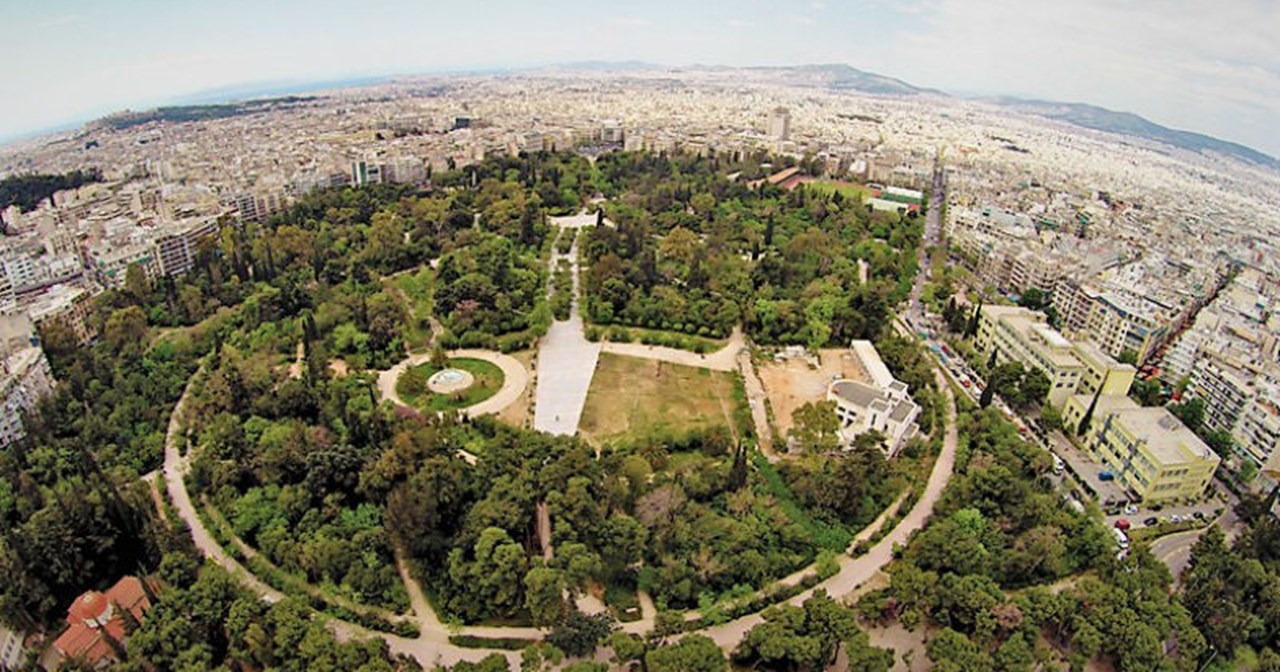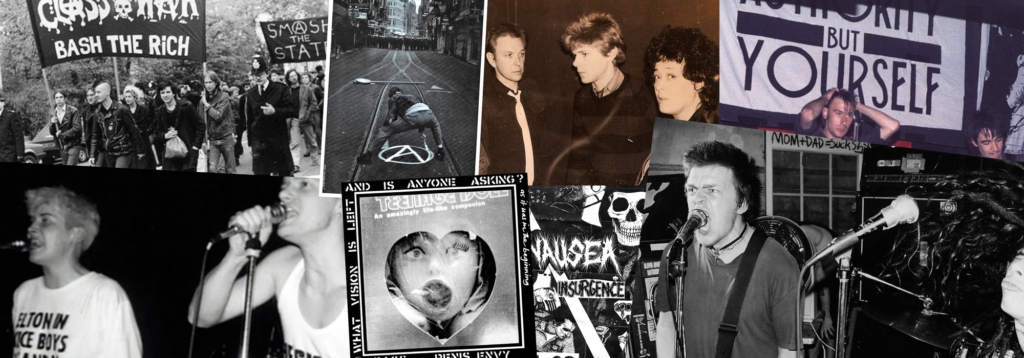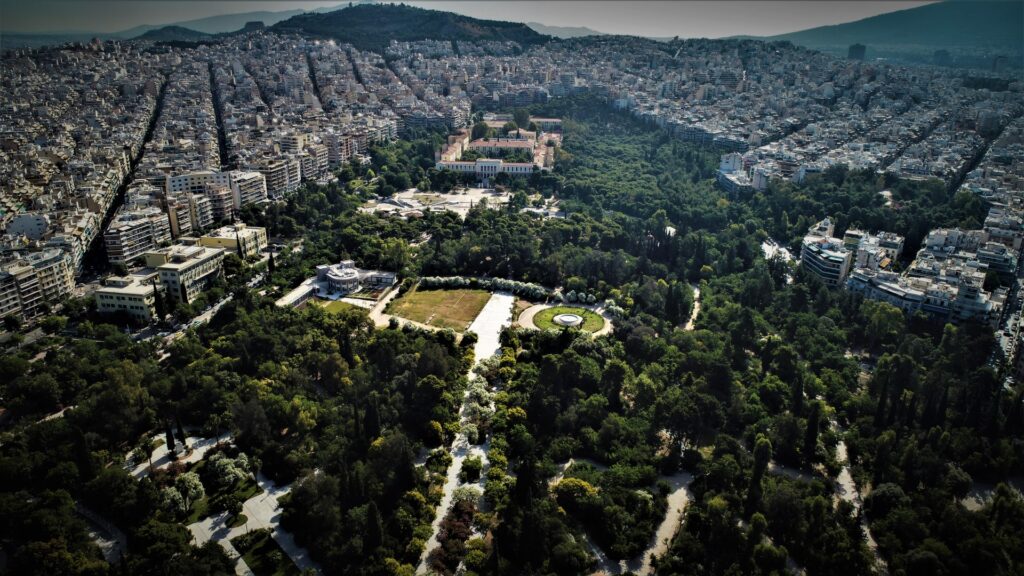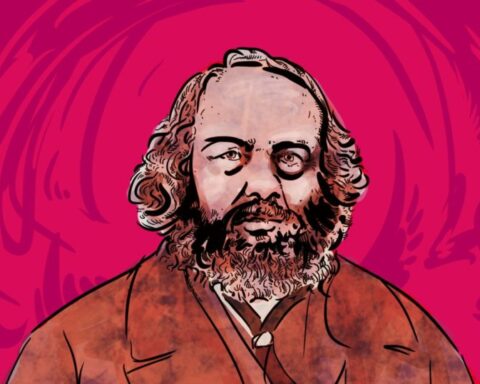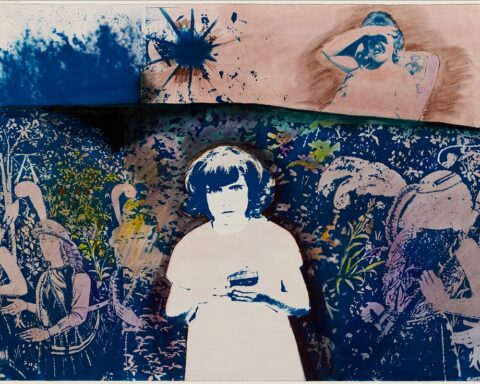POLICING THE URBAN SPACE OF THE CITY CENTER, MARGINALIZING THE « UNDESIRABLES », STIFLING INFORMAL AND SELF-ORGANIZED PRACTICES IN PEDION TOU AREOS
Nicolas Richen et Lola
Co-editor : Georgios Vontitsos
1. FEELING AND UNDERSTANDING SOCIO-SPATIAL VIOLENCE
A free, open space, green and conducive to self-management activities. An everyday space that also crystallizes fears, whether they are proven or not. A space to breathe, sometimes to hide and rest. A green lung in a suffocating, ultra-concrete, congested, noisy city. This is often how Athenians describe Pedion tou Areos (Πεδίον του Άρεως), the largest park in the city center, administered by the Attica region. This park we walk through on a daily basis and it is in this context that our reflection* began. In June 2022, the contemporary art exhibition Plasmata arrived in Pedion tou Areos. Once again, its organizer, the Onassis Foundation, occupied and nibbled away at the land, making informal uses and activities increasingly difficult. On the occasion of the summer 2021, it already organized, in the same park, the exhibition You and AI: Through the Algorithmic Lens. Again, in the park, screens several meters high and wide were overwhelming us, soundtracks saturated the soundscape, employees (surely precarious workers) located at each installation ensured a security presence.

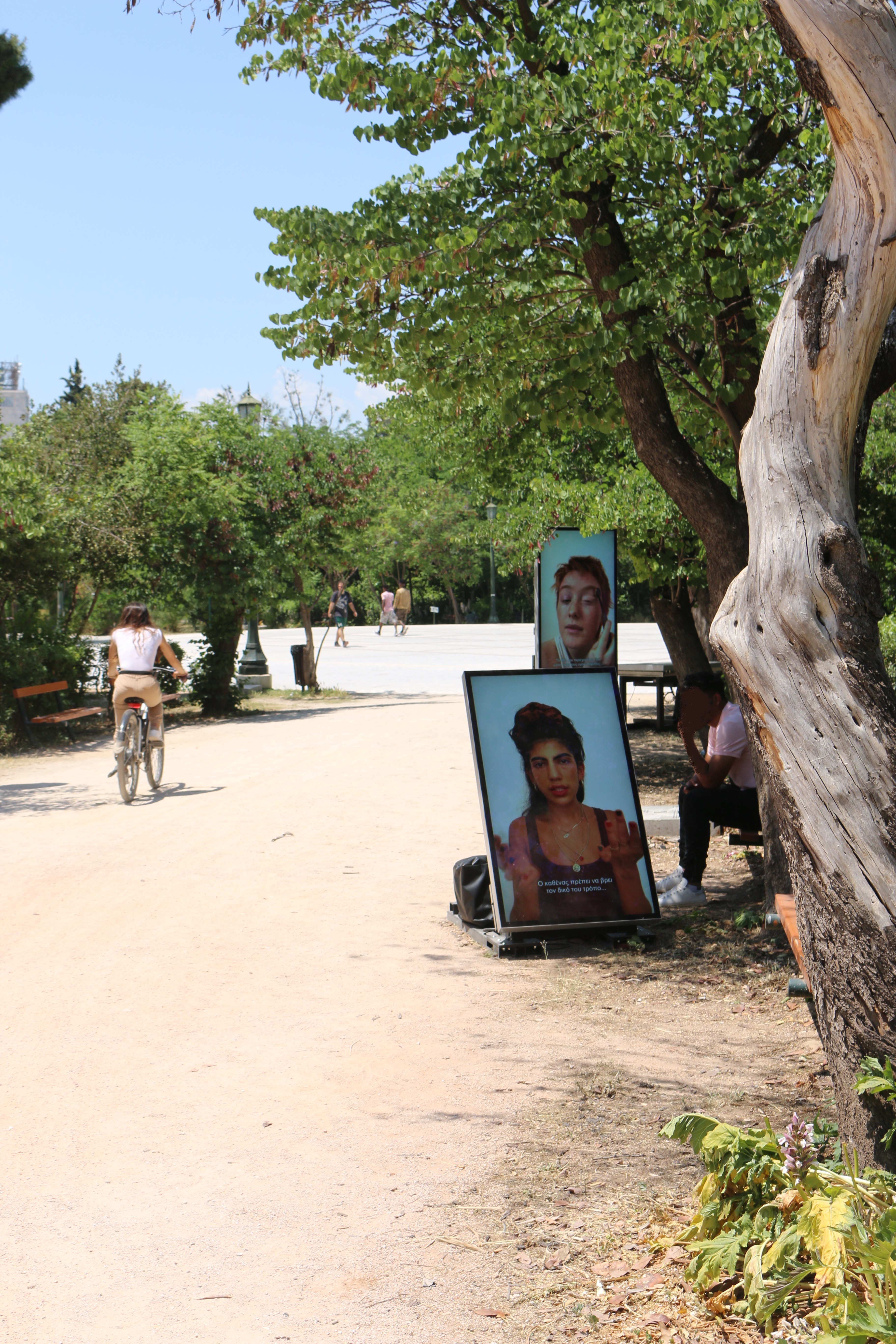

We had the feeling that a major change was taking place in the park: a feeling of uneasiness, symbolic violence and dissonance was settling in. This feeling is the starting point of this article. It is a reflection of inherently racist policies, but also of a spatial struggle and thus, inevitably, of an increasingly violent social class war in the center of Athens. We then wanted to understand the mechanisms of power in the park to grasp a more global phenomenon devouring the city: philanthro-capitalism. Little by little, we realized that Pedion tou Areos was in fact one more free and green space to be standardized by the Municipality of Athens, the Region of Attica and a whole series of private actors, as are the hills of Filopappou and Strefi, the square of Exarcheia or the parks of Akadimia Platonos, Kiprou kai Patission or Drakopoulou, to name but a few. We are talking about green spaces here, not in the way that the cultural elite that makes up the Onassis Foundation gives it – a santardized « environment », to be optimized, to be made « attractive ». No, we want to refer rather to the ecology of the classes galériennes [Slang word for a person (or in our case a class) in precariousness, economic poverty, who carries a social stigma but has a muddling through system]. This ongoing process is a struggle between two practices of the world: one informal and self-organized (from below) facing another (from above), institutional and monopolizing the common for private and commercial interests. It is a place struggle as described by M. Lussault, a social and spatial struggle. The more we investigated, the more we discovered the extent of this process of spatial dispossession in Athens and the way in which the local ruling class works in concert with central actors in Greece: those of unbridled philanthro-capitalism – in particular of the Onassis and Stavros Niarchos foundations. Soon, we have seen the emergence of a sprawling and accelerating phenomenon in the city, as evidenced by the multiplication of Onassis Foundation activities in many Athenian neighborhoods. We will discuss the case of the latter foundation in Pedion tou Areos to illustrate a process which, as we shall see, echoes a mode of government known for a long time in Greece under the name of evergetism.
For all that, our article defends the idea that it is possible and desirable to overcome this hold on our common spaces, our lives and our ways of making society. The phenomenon we are going to describe and analyze also meets resistance (physical, collective and memorial) against what deteriorates the park and through the affirmation of what we call the infra-city – by taking inspiration from James C. Scott’s infra-politics. The latter reminds us the notion underground: it is the city that we do not see when we look at it from above, like an architectural model or through a safe and commercial vision. It is the city that we live, when we are in the street, that we understand the codes of the débrouille [muddling through], the magouille [scheming], the survival, the informal and the self-organization.
* Our approach is resolutely critical and lies at the crossroads of social sciences, journalism and political analysis. Our critique is aimed in particular at the institutions in place, the ruling class and not at the workers or artists belonging to the working classes. It is about targeting the state and the capitalist system (in particular its philanthropic inclination) which displace whole sections of populations considered « undesirable » from the central districts of Athens and make public spaces (or formerly common spaces) hostile for these same people. The writing of this article is also motivated by our own radical militant experiences in France and Greece in squats, in self-managed kitchens, in mutual aid networks with exiles or the Yellow Vests movement. Many thanks to our readers.
2. A COUNTER-HISTORY OF THE PARK FROM BELOW
In order to go beyond our own feelings, we have conducted direct observations and informal discussions with people who have been coming to the park regularly for several years, or even several decades for some of them. We will also rely on interviews conducted with 3 people with diverse trajectories. First, with Thodoris, 66 years old, a lifelong resident of Exarcheia. He has been involved for a long time in different struggles of the neighborhood as well as in a committee for the defense of the park Εμείς στο Πεδίον του Άρεως (We in Pedion tou Areos). Then we met Kostas. He grew up far from the park, in the neighborhood of Nea Smyrni, but from the early 2000s he frequented Pedion tou Areos, and then moved to an apartment nearby in 2020. Finally, we met Mega, who arrived in 2019 in Athens as an Iranian Kurdish refugee. He lives in the surrounding area of the park that he discovered through the squatting networks. It was in Pedion tou Areos that he was able to give the first martial arts classes of his club open to all and free.
For Pedion tou Areos as for the other parks of Athens, it is the story of a place for the placeless
Even if these three people are attached to the park in different ways, they all describe it as a green and free space. In this dense and concrete city, having access to space, freshness and a more breathable air is a necessity but also a rarity. That’s why Pedion tou Areos is essential for galley dwellers, beyond their differences of path. It is a space free of constructions. This absence of buildings, Thodoris reminds us of its vital importance when in 1981 and 1999 earthquakes hit Athens: « People took refuge there and even went to sleep there for 2 days. In those moments of distress, the park was a very important place of sociability and mutual aid. » It is also a free space, which leaves room for imagination and popular resourcefulness. For Pedion tou Areos, as for the other parks in Athens, it is the story of a place for the placeless: for people surviving on the streets, for whom free access to water, toilets, and an unsupervised space is rare; for those crammed into unlivable apartments, for whom the park is an extension of home to celebrate a birthday, invite friends for a café, share a game of backgammon, or to be alone. It is also a place for activist collectives who don’t have a space; a place for DIY culture, for unregistered and self-organized concerts and festivals. Or a space for sports classes as Mega tells us: « The park is a huge place that allows us to do a lot of things, it’s very green so there’s always fresh air. It’s a really unique park in the center of Athens; it’s also a safe place for women, families. That’s why we chose this place for our training. » It is through these other eyes that it was possible to understand that this park can be, on the one hand, a space of relaxation and freedom and on the other, a space of fears, of permanent vigilance, of survival, of coping, where one fights even to find sleep.
In the 90s, as Kostas tells us, « It was not a very important park, […] it was more for the locals, it was nice for the people of Exarchia to walk their dogs and go for a bike ride. » The park was then also popular with skateboarders like Billy Gee, who testifies to Inside Story. As a kid, he started going to the park in 1995 with some friends: « We used to hang out by the Athena statue, where a lot of skateboarders used to gather at the time. It was a great feeling, a small universe with many worlds. Russian and Albanian immigrants would gather in front of the statue of Constantinos, while punks would join us in front of the statue of Athina. » For Billy, Pedion tou Areos became a second home until 2008 and the redevelopment works. This attachment to the park is accompanied by a responsibility for its maintenance, while the staff of the Municipality of Athens and the Region of Attica is reduced between the 80s and 2004: « With 60 skateboarders, we spent all our free time there. We loved and suffered (for/in) the park. Every week we would buy bleach and take the hose from the kiosks to clean this space because leaves and berries would accumulate. We would take money out of our pockets to buy cement and « patch » the puddles, glue the bits of marble that were coming off the slabs. From time to time, we would trim the plants around the statue.«
According to Thodoris, the process of privatization of the park advances slowly since the 90s, period of the works of extension of the sports association Panellinios Gymnastikos sillogos. This association is present in a part of the park since the years 1980. In 1997, its president changes. From now on, it is led by Minos Kyriakou, the founder of the private television group Antenna. Under his presidency, in 1998, the association expands to 1500m² and 3 floors. These works violate the conditions of the public authorities regarding the « non-constructible » status in the park. It seems anecdotal but it is the beginning of a struggle because Thodoris tells us that this year, « a committee of inhabitants was formed to denounce this construction because nobody reacted« . This is also one of the first and many examples Thodoris gives us to talk about diaploki (διαπλοκή). This term refers to an intertwining of the relationships and interests of the ruling classes (media, political, industrial) that organize together to obtain benefits, contracts and services within the legal or non-legal framework.
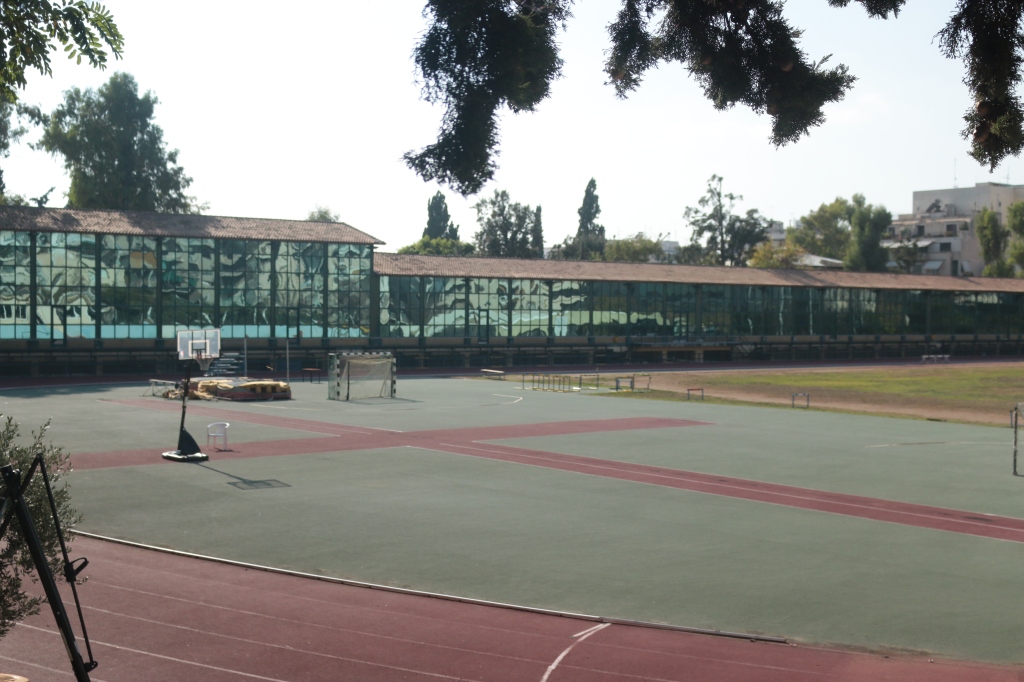
A decade later, between 2000-2003, Pedion tou Areos is part of the « urban renewal program » elaborated by the Ministry of Environment and Public Works for the 2004 Olympic Games, with the approval of the Prefecture of Athens-Piraeus. Thodoris, tells us that in the early 2000s, « the park was open, there were no fences, it was only delimited by bushes. » The first works included the installation of barriers, the cutting of trees, the division of the park into 4 parts and the reduction of the number of entrances from 16 to 4: « There were demonstrations with not only the inhabitants of the surrounding districts but also of the whole city. It was mostly people from anti-authoritarian and left-wing backgrounds. They had already put up barriers but some of them were knocked down. » Thodoris recalls a « massive » movement, « There were 500 people watching and 500 knocking down the barriers. » If the initial project and the drastic reduction of entries did not see the light of day, the barriers nevertheless ended up imposing themselves and, with them, a control of the opening hours of the park. This change already marks a turning point for the people living in the park, who are now either locked in at night or forced to move to an adjoining street every evening and morning.
In the same vein, between 2008 and 2010 the park is the subject of a renovation plan financed by European funds and Greek public funds to the tune of 10 million euros. The contractor finally went bankrupt and only 70% of the work was completed. For Kostas, this is the beginning of a sanitization of the park: « After the renovation in 2010, it was no longer an open space, but it was not a private space either. So you could say that this process goes back 12 years and slowly makes the park less and less accessible.«
En 2013, sous le mandat municipal de Georgios Kaminis et de Nikos Dendias, le ministre de la « Protection civile » de l’époque, plusieurs « opérations skoupa » – littéralement opérations « coup de balais », qui se réfèrent à l’expulsion, à l’enfermement et au harcèlement policier des personnes soupçonnées « sans-papiers » – ont eu lieu dans le centre d’Athènes. Thodoris se souvient « qu’ils prônaient une « Athènes propre » et le problème a été déplacé à Pedion tou Areos, parce que là-bas ils n’étaient pas visibles. On parle à peu près de 200-250 personnes toxicos. Elles étaient cachées. Les personnes allaient autant pour acheter que consommer là-bas. Ces personnes n’étaient pas particulièrement dangereuses mais dans les médias, c’est devenu une histoire énorme comme quoi à Pedion tou Areos, « il y aurait des seringues qui vont te tomber dessus ». Les gens ne mettaient plus un pied dans le parc alors que ces personnes en addiction elles occupaient 1/8ème du parc. Donc certaines personnes, peu nombreuses, continuaient à y aller mais d’autres sont parties. »
In 2013, during the municipal mandate of Georgios Kaminis and Nikos Dendias, the minister of « Civil Protection » at the time, several « skoupa operations » – literally « sweep operations », which refer to the deportation, confinement and police harassment of suspected « undocumented » people – took place in central Athens. Thodoris remembers « that they were advocating a ‘clean Athens’ and the problem was moved to Pedion tou Areos, because there they were not visible. We are talking about 200-250 drug addicts. They were hidden. People went there to buy as well as to consume. These people were not particularly dangerous, but in the media it became a huge story that in Pedion tou Areos, « there would be needles that would fall on you ». People didn’t put a foot in the park, while these people in addiction occupied 1/8th of the park. So some people, not many, were still going but some people left. »
During the summer of 2015, exiled people arrive in Athens from the Aegean islands. Without emergency housing solutions, public squares like Viktoria and the park of Pedion tou Areos give way to spontaneous encampments. Both Thodoris and Kostas have been involved in the solidarity networks that have developed there. They speak of a « positive » event despite the precariousness of the situation: the awareness and the mobilization of the inhabitants of the neighborhood in the struggle for the exiles. Kostas tells us that « it was no longer a park, it was rather an emergency space. There were camps everywhere. But it was a necessary thing to do. You can’t tell people, ‘okay, here’s the grass, you can’t put your tent up,’ no. Everybody was trying to have a place to themselves, privacy. I don’t think many people criticized that. I told you, Pedion has had a mixed history, so even before that, not many people were using Pedion. » He details, « At first people were skeptical, but we saw that everyone was trying to do something: libraries tried to teach kids, give them toys, there were some doctors, lawyers and a legal team. There was a great response from the community and generally from people in anti-establishment spaces, so to speak. There was a lot of police presence. I remember there were some fascist attacks in the neighborhood. But a lot of people came (to support us) too. » Moreover, Thodoris remembers the mobilization of the supporters of the local club Panathinaikos, when the word got around that fascists were going to attack the people present in the park. The fans organized a kind of « security service » for several days. For Kostas, this awareness and the constitution of new solidarity networks was also because for once these marginalized, invisibilized and constantly sidelined people found themselves in a space located in the center of Athens, so « many local people who were not aware of the situation of the exiles started to get involved. Before, there was denial: ‘Oh, it’s far from us. It’s on the islands’. And then it happened in Athens. I think a lot of people got involved in the right way. […] A lot of people went to the refugees at that time to help them, to give them food, etc. In general, there was solidarity from people in the neighborhood« . A few weeks later, in August 2015, the people (about 300) were evicted from the park and transferred either to the Eleonas camp (built in 2 weeks, initially for 700 people, on the outskirts) or to Viktoria Square for those who did not want to go to Eleonas.
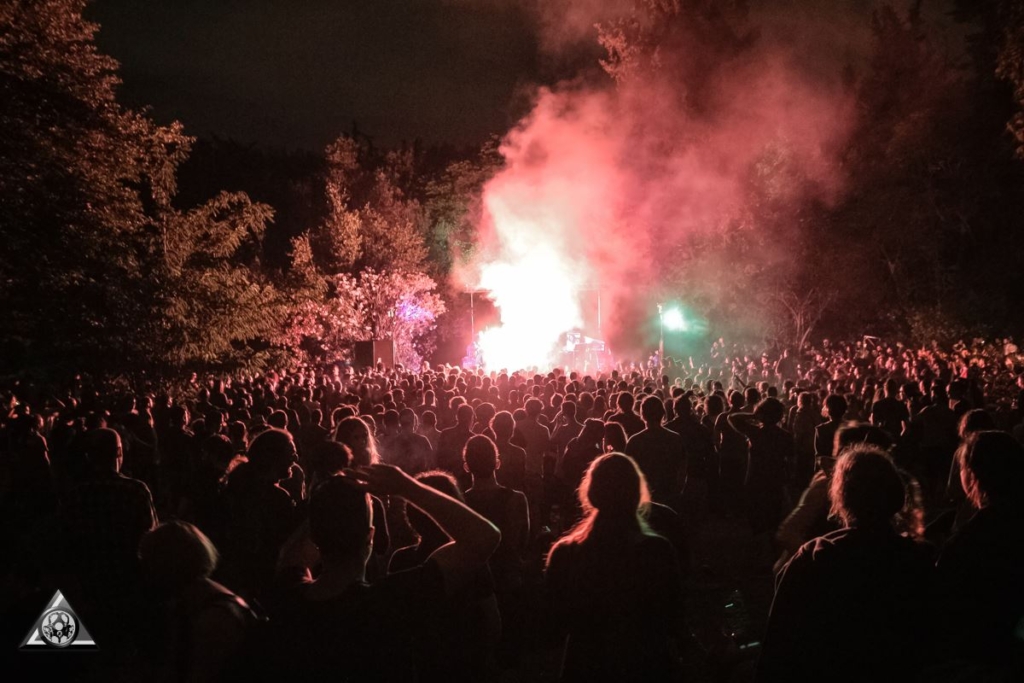
To complete this story from below, it is necessary to remember the importance of the Indie Free Festival, a self-managed and non-market festival organized by the anarchist cultural group Void Network (Keno Diktio). It celebrated its 30th anniversary in 2021 and has been organized in Pedion Areos from 1991, attracting thousands of people every year. Never declared to the authorities, this event aimed to create « Utopian Ephemeral Zones of Autonomy« . In June 2018, it was first banned by Attica Governor Rena Dourou (Syriza), Prosecutor Elias Zagoraiou and the police – it was still held a few months later. No self-organized festival of this magnitude has taken place in the park since the confinements of 2020-2021 and the deployment in the park of philanthro-capitalism with the arrival of Onassis.

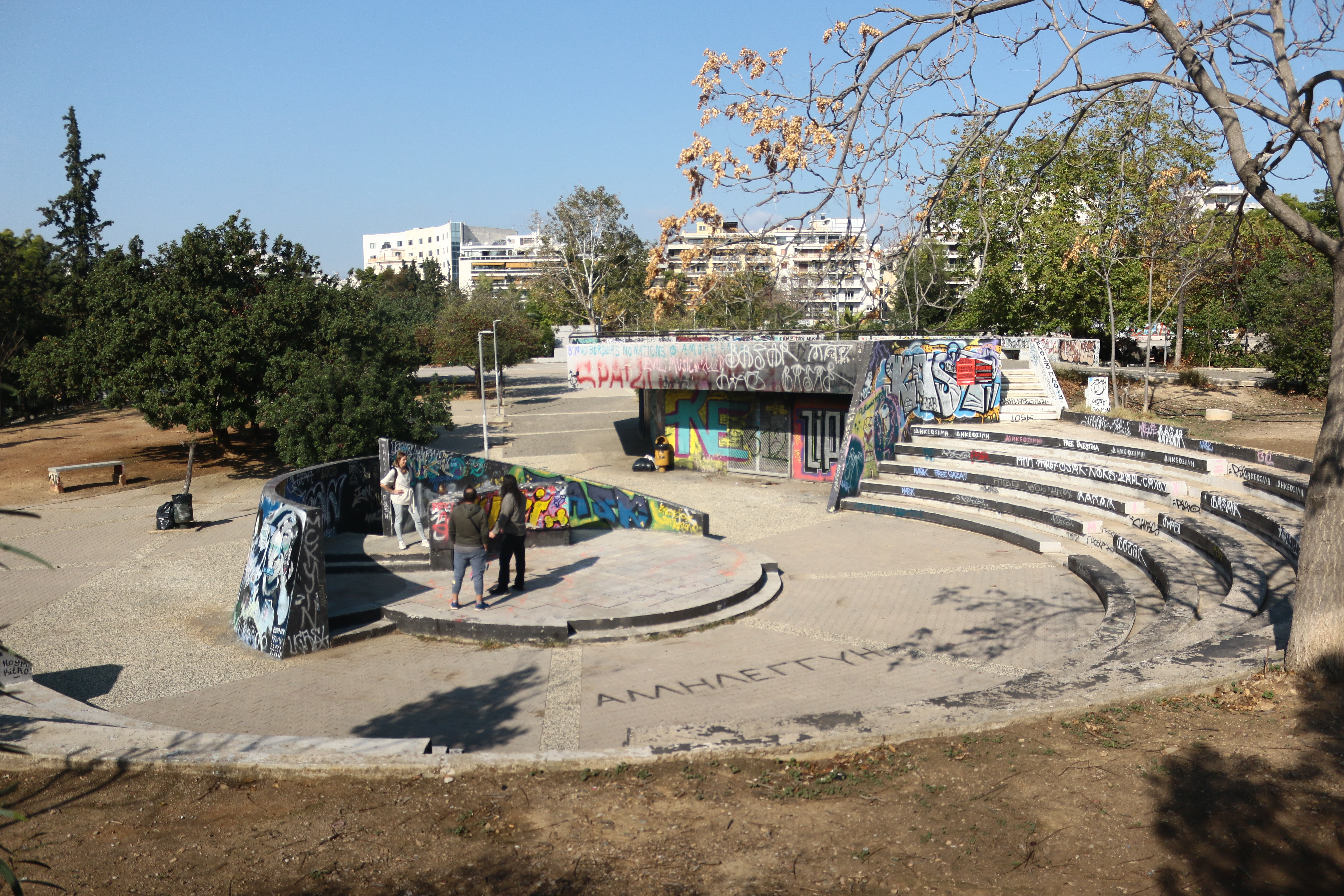
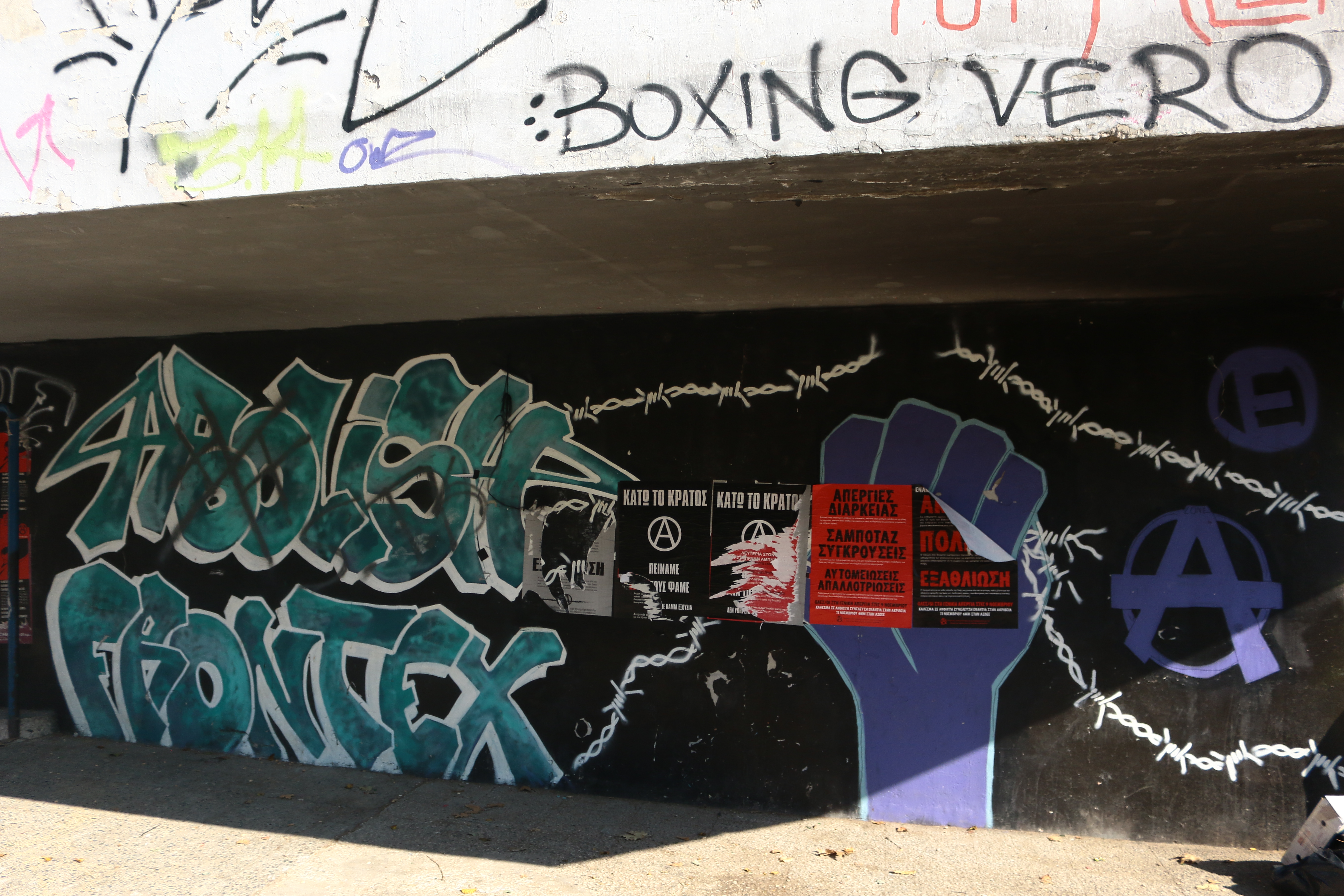
Protomayias is a place where people hang out, gather or throw parties, like techno parties and DIY hip-hop festivals.– Kostas
Along with the increased control we were told, self-organized gatherings and parties continue to take place in the park. And in this regard, we have to talk about Protomayias Square (May Day Square), where events of the Greek Communist Party (KKE) historically take place. Located in the middle of the park, next to a military building, Protomayias is central to talk about the informal life in the center of Athens, a life decried by some residents as illustrated by the speech of the page Pedion tou Areos to Parko Mas. As if this space were an extension of a home (non-existent or not always comfortable), retired people bring tables and chairs to play backgammon. Young people from Pakistan play cricket, others participate in a political discussion, an anti-fascist soccer tournament, or a self-managed bazaar. Protomayias Square is also frequented by Do It Yourself (DIY) concert goers like Kostas. He has witnessed the increase in attendance and self-organized activities since the confinements (2020-2021): « Protomayias has become a much more important gathering place than it was in the past. For a long time, it’s been a place where people hang out, congregate, or throw parties, like techno parties and DIY hip-hop festivals. » Due to the repression of squats in universities and the « skoupa operations » that have increased in recent years with the New Democracy government, it is understandable why this square has become an alternative to organize, from below, free and solidarity activities. « During the confinement, it was a place where many people came. Instead of being locked up in their homes, having no place to go, people tried to socialize a little more than what was allowed because they needed it. It was a way of saying, « We’re getting out of our house. Pedion was a place where people could find this peace, this serenity« , concludes Kostas. But the confinements are also synonymous of an increase of police controls (2020-2021) in the park and on the 1st May Square.
Finally, this story seen from the bottom of Pedion tou Areos is the story of all those shattered and salvaged lives of marginalized people (people with disabilities, addictions, immigrants, racialized people, LGBTQIA+, poor people, squatters, bodies considered « abnormal » or « surplus »), especially since it is an urban space without cameras, where it is possible not to be seen. When the authorities did not have a plan for the « valorization of the territory » for the park, these people were moved here, to hide them, to make them invisible to the eyes of tourists, of the rich. Some people find partners with whom to have sexual relations and affection, and others live from this sex work. Still others come to sell or buy drugs. Despite waves of evictions of these « undesirables » in recent years, there is ample evidence that in 2022, young women (often with young children) and men continue to survive in and around the park. The fires of the summer of 2021 reminded us of this. The park was on fire alert, so the authorities « cleared » it and closed it. It was at that moment that an outside look at the park could realize how many young men were living in it, because there were a few dozen of them staying during the day in the window recesses of the surrounding buildings, maybe waiting to be able to return in the evening.
Pedion tou Areos is a strong social space in the sense that the people who use it attribute different functions and memories to it. This counter-history of the park illustrates the fact that if this space has not been maintained by the local authorities for years, Athenians by birth or adoption, and inhabitants of the surrounding neighborhoods in particular, have used it in many ways according to their own needs. These tinkerers of informality and their practices are not to be idealized as they are also marked by relations of domination, but we wish to distinguish them from practices of power from above.
This history from below that we wanted to trace in part allows us to grasp the extent of the changes in the park in only a few years. Pedion tou Areos has become a tool of an urban strategy of control and police harassment of the « undesirables »: to displace and invisibilize them rather than to radically address social inequalities. This is in line with the policy of the mayor of Athens, Bakoyannis, to make the city even more « attractive » to investors (Greek or foreign) and tourists. In this political project, the Region of Attica and the city hall of Athens have found in the Onassis foundation a strong ally.
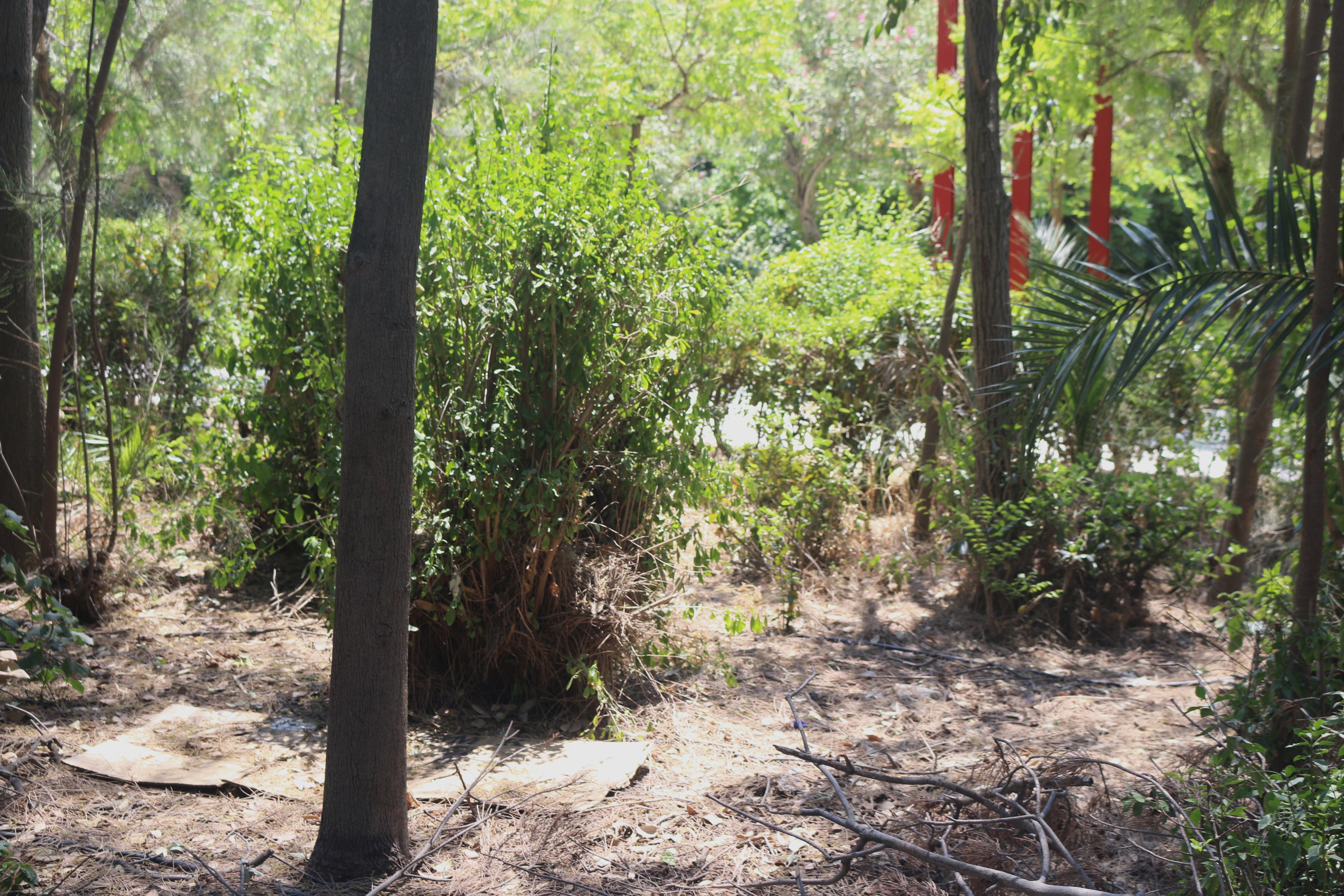


3. THE ONASSIS FOUNDATION, A SMOKESCREEN. STORYTELLING AND REALITY
The Onassis Foundation was created in 1974 by a shipping giant, Aristotle Onassis. It was built around his myth: a self-made man who made a fortune in the world and remained devoted to his country. Thus, the foundation would be a tribute to his deceased son as well as a « trickle down » of his fortune to the Greek people. The foundation is in fact divided into two sectors: the Business Foundation and the Public Benefit Foundation, which operates with 40% of the annual profits of the former.
Let’s focus on the first sector. The Onassis Group owns several « limited companies ». According to its official website, the Olympic Shipping and Management S.A. (formerly Olympic Maritime) is the company that, in a way, oversees all the others (Springfield Shipping Co. Panama S.A; Olympic Vision Maritime Inc; Olympic Agencies LTD; Olympic Shipping and Management Singapore S.A PTE. LTD.). This group of companies makes profits in the transport of oil (21 tankers), dry goods (10 bulk carriers) and offers services for ship chartering and accounting. Onassis is therefore first and foremost one of the world’s largest carriers of oil and other derived products. The group is also active in the global transport of gas, for example, through the shares of Olympic LNG investments LTD in the company Gaslog. This company (and its many subsidiaries), although it prefers to put forward in Piraeus (Greece), is mainly attached to Bermuda and the Marshall Islands. It is also within the framework of Gaslog that Onassis and the Livanos Group have partnered with BlackRock’s Global Energy & Power Infrastructure arm.
Beyond the energy sector, the Onassis group has expanded its field of conquest. Already in 2009, A. S. Papadimitriou, the president of the foundation, announced that « one third of the assets are invested in ships, one third in real estate and one third in a financial portfolio« . Indeed, the Onassis Group includes in its ranks the company Ariona Hellas, a company that builds, buys and rents real estate in the Attica region. There is also Asofin Management AG, which specializes in « the management and financing of related companies through the granting of loans, guarantees and the like. The company may acquire, hold, manage, pledge and sell real estate, intangible assets and other rights, as well as carry out all activities considered to be in the interest of the company.«
As for the Public Benefit Foundation, one cannot understand it without knowing its companies and noticing this two-headed body. In fact, if we take a closer look at the members of the foundation’s board of directors, we can see the intermingling, or diaploki (διαπλοκή) (see opa. cit.), between the foundation that presents itself as « benevolent » and the group’s multinational companies, destroyers of the environment and the lives of workers. In the beginning, Aristotle Onassis composed the foundation’s board of directors with the closest « collaborators » of his shipping company. Today, the Board of Directors is still a fine symbol of the Greek interiors and ruling classes. For example, the chairman of the board since 2005, lawyer Antonis S. Papadimitriou, is the son of the former legal advisor of A. Onassis. Or Panayotis Touliatos, also a member of the Board of Directors, was a former private secretary of Aristotle Onassis, before becoming director of Olympic Maritime S.A. and then of Olympic Shipping and Management S.A. The quick organization chart of the Board of Directors that we have made from the Onassis website shows us that we cannot question this foundation and its activities without talking about the cultural and financial elites that make up one and the same world. We are talking about members who have mostly studied in the United States, in England or in France in fields of training that include law (especially business law), economics, finance, maritime commerce, navy, physics and chemistry, philosophy (including for the benefit of finance and « credit risk management »), scenography or literature. Many of these members are also present on the boards of other foundations, banks, companies and business federations. At the same time, they may be part of the academic world, in Greece or abroad, or even be a consul. Some members even proudly display in their presentations their links with the British and Monaco royalty, or with the religious order.
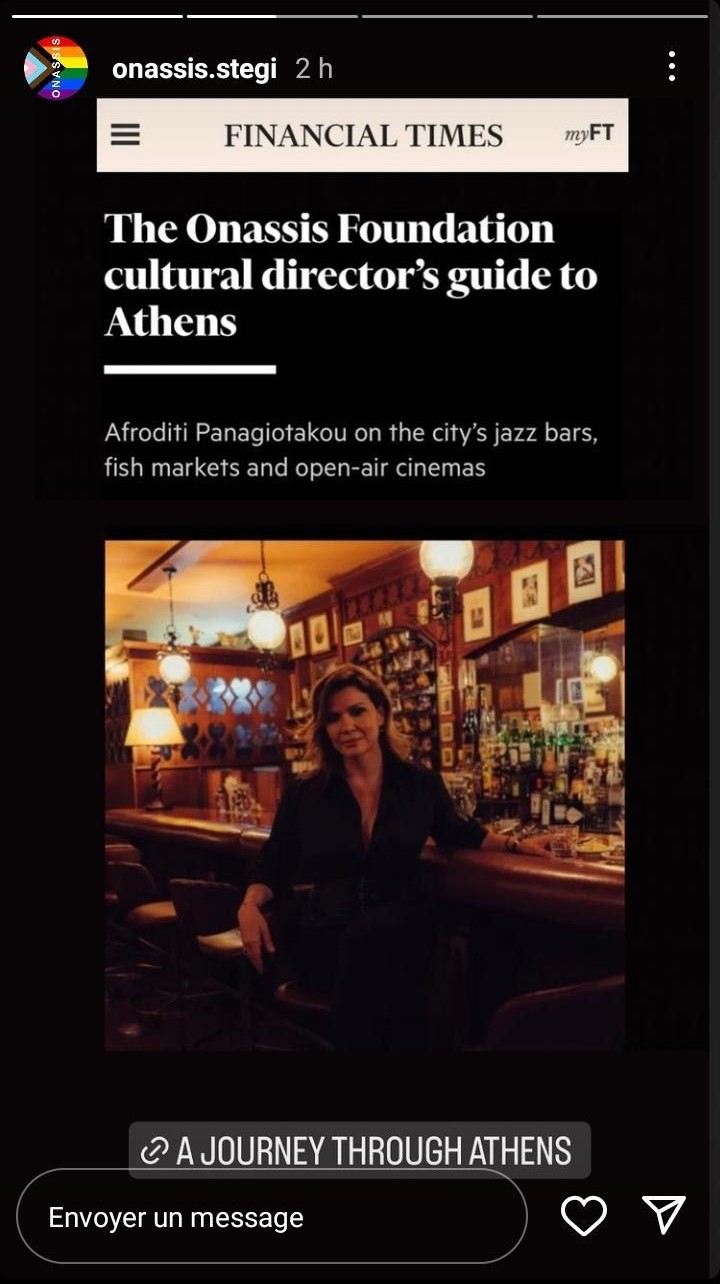
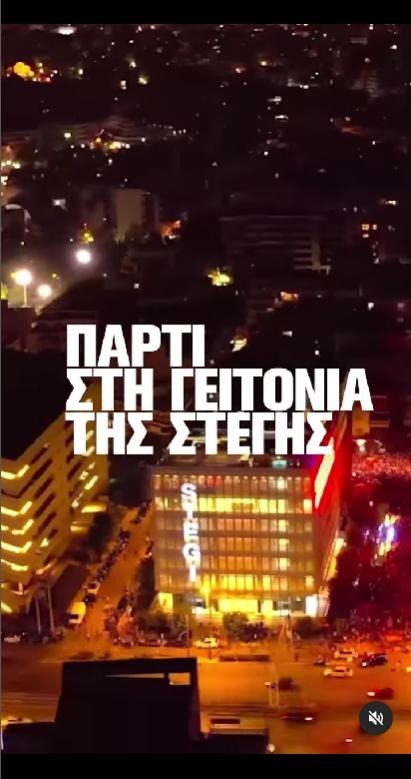
This foundation, which claims to be dearly attached to the locality, has placed its headquarters in Liechtenstein (Vaduz), its « cultural heart » in New York and a new cultural center, the Ola House in Los Angeles. If we focus on Onassis’ actions in Athens, there is the Onassis Library, where the archives of the poet Cavafis, purchased by the foundation, are located. There is also a heart surgery hospital financed by the foundation, as well as modern Greek teaching positions in various universities, scholarships, Greek schools, education programs for people with autism and disabilities. The foundation thus infiltrates public areas plagued by austerity policies and/or high unemployment. This is the case of the arts in Greece, where Onassis seems to want to be a key player. In 2010, Athens has a new building marked Onassis: ONASSIS STEGI. This huge 18,000 square meter building (the size of a city block) on Syngrou Avenue is used for theater, music, dance and exhibitions. On the roof there is a gourmet restaurant to set the mood. This cultural center, a showcase for Onassis in Athens, claims to challenge « the boundaries between art and science, gender and technology« . The director of programming for the foundation’s cultural hub is Afroditi Panagiotakou, who married the president of the Onassis foundation a few years later, in 2014. A. Panagiotakou decides on the events organized at Stegi and more broadly in Athens, such as the Plasmata exhibition. Not surprisingly, she traced her higher education path in Greece and then in London.
The foundation also extends its influence into the intangible territory of social sciences. It finances, for example, the Athens Social Atlas project of the National Center for Social Research (EKKE), whose object is the critical social mapping of the city of Athens. From this proximity with the social sciences, it makes of it a base of legitimacy and a proof of « critical » spirit for these events as Plasmata.
4. EXHIBITIONS REGARDING PHILANTHRO-CAPITALISM AND URBAN PRIVATIZATION
After outlining the features of the public foundation and Onassis’ Stegi, we will focus on the foundation’s presence in the park where it finances and organizes so-called « cultural » and « free » events. Since 2018, Pedion tou Areos has become the playground of Onassis. To begin in 2018, Park Fables, the fifth edition of the Fast forward Festival (funded by Onassis), took the Park as its object. Through debates at the Stegi or guided tours, a radio station, a brass band and other activities within the park, the stated goal was conceptual, to say the least: to create « an ephemeral field of fictional links between the real and the imaginary, generating encounters between history and memory, between people, desires and experiences, between different situations and identities shaped in Pedion tou Areos« . Translation: by investing the history of the park’s memories, the foundation set the pace, and at the same time, builds its own place in the city as the new manager of the park. This storytelling of the foundation is based on the will to « activate » a park that represents a « fertile ground ». Already at that time, their ideological aims were taking shape: to become no more and no less than the main actor and « benefactor » of an « equitable and participatory public sphere« . But behind this speach, the action of Onassis transpires the class violence. The poster of the festival illustrates this by using the image of Mavroula, a stray dog companion of Maria, herself homeless for 40 years and whose face is well known in the park. This is a way to transform the daily reality of misery lives into entertaining tales.

Onassis’ first exhibition entirely at Pedion tou Areos dates back to 2021, with You and AI: Through the Algorithmic Lens. This one is supported by the region of Attica and co-financed by the EU program « Europe Creative ». This event marks a further step in the appropriation of the park. For a month, we saw the installation of large HD screens, 3D sculptures located in the vegetation of the park and accompanied by sound clips reproducing the roar of lions or rhinoceros and this at each movement detected. The purpose of this exhibition? Officially, to talk about artificial intelligence through the prism of « control », « democracy » and always « public space ». With You and AI, Onassis defends HIS vision of the park: « But above all, Pedion tou Areos Park constitutes the heart of a new Athens – a multicultural Athens brimming with diverse communities – but also a place where public space is being discovered anew, where young people are being brought together with older citizens, and where the digital encounters the physical, public meets private, and artificial intelligence connects with each of us. » This wonderful world, without antagonisms, where public-private partnerships flourish. Through You and AI speech, the Onassis team seizes on the Queer movement and drag show techniques. It takes up the words of critical social sciences, radical circles and oppressed communities: « How are gender, race, body, disability, class stereotypes intensified through machine decision-making, leading to a standardized, homogeneous and monocultural view of the world?«
In 2021, the presence of Onassis takes on another dimension in the park and this is always with the support of the Region of Attica. The exhibition Plasmata: Bodies, Dreams and Data (plasmata means creatures) lasts this time almost 2 months and occupies the entire visual space, sound and territory (from the ground to the sky). Euronews headlines about « the largest outdoor digital art exhibition in Europe ». 25 huge screens or structures all over the park. Some project a movie, others stay on all day. The humanoid installation called « Happiness » talks to us and mimes taking drugs. LED screens reproduce the body movements of passers-by, while another represents a large life-size tree with a sound that vibrates the ground for several meters around. From small structures to the mega-structure of 22 meters, « Red Planet ». The latter, together with a set of blue projectors, can be seen for part of the night from the heights of Athens. The foundation also extends into what it calls « parts of the park that are not, for the most part, known to the general public. » The Onassis team goes further and tells us what is and is not the park. The foundation even makes its inhabitants, or rather its « creatures », speak: « Pedion tou Areos remains political, collective, inexhaustible. Its Plasmata [creatures] invite you to discover it. » The aim of this exhibition is to explore the body « individual or collective, human or non-human, or – ultimately – planetary in a ‘post-technological‘ society through great existential questions like ‘Do you know who you are? Can you dream? Can you breathe?‘ ». But it’s all entertainment: « Plasmata promises to entertain us but also to give us pause for thought in the Athenian summertime.«
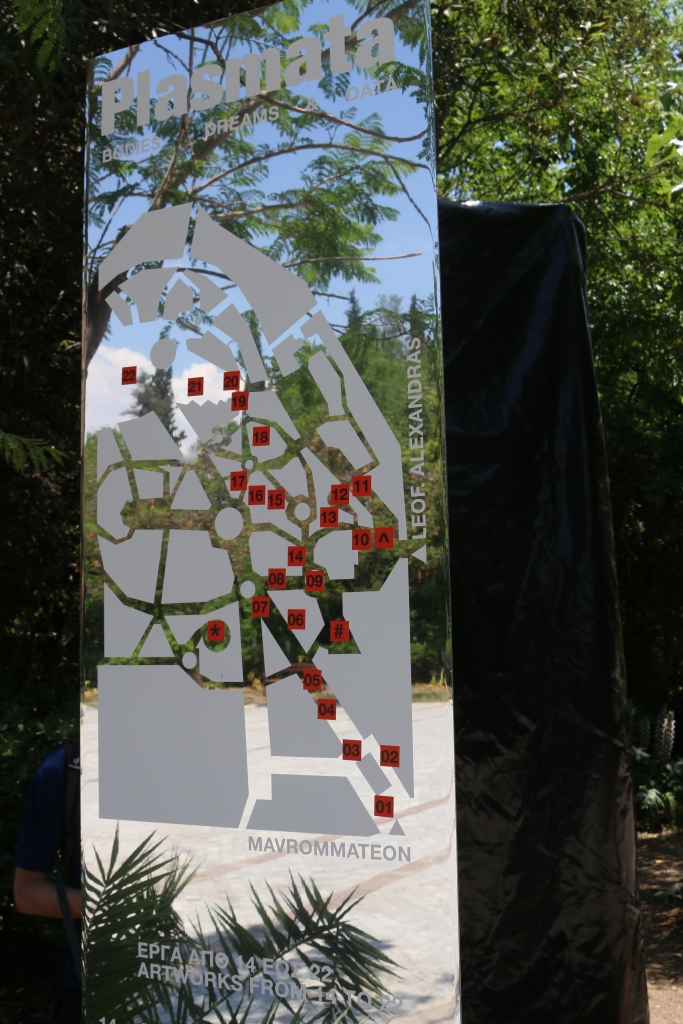
Philanthro-capitalism is the capitalist class forging in people’s minds the possibility of reconciling the act of «taking», exploiting, privatizing and «giving»
These three exhibitions have the pretty face of progressivism and concern for the public good. They almost make us forget that every structure, every employee, every event in Onassis depends (on money and decisions) on an extractivist empire based on the transport of polluting energies. And behind this empire is an elite or even an oligarchy of Greek shipping companies that reproduces itself in a closed circle. We can take the example of the three great families Livanos, Niarchos and Onassis whose respective companies compete on certain markets, and yet, they do more than collaborate since they have all married each other.
So, how to interpret this apparent contradiction between the foundation’s speech and the very DNA of the Onassis company? Between a seemingly critical discourse on dominations and a capitalist family empire? All three exhibitions can be analyzed through the prism of philanthro-capitalism. This term refers to a strategy of governance between the state and the market. This one is not new, but for sociologists Linsey McGoey, Darren Thiel, and Robin West (2018), « what is really new is the fact that the ideas behind philanthro-capitalism have become so influential, when previously much of the public in Europe and North America despised and deemed similar ideas from theories of economic liberalism ridiculous, and saw them as a form of ideological makeup used to reinforce the unjust power of plutocratic elites.«
Philanthro-capitalism is the capitalist class that forges in people’s minds the possibility of reconciling the act of « taking », exploiting, privatizing and « giving ». Thus, this social class that plunders the greatest number would not be the one that creates social inequalities but rather the one that will fight against this naturalized evil. Capitalism would have in its essence « human kindness » and the care of the other. Reversal of responsibilities, roles and reality. This social class, which thrives on social inequalities, will therefore take on the role of savior for the « public » good. This belief has as a consequence to distort the reading of the reality and especially the identification of the relation of exploitation. It also produces a state of heteronomy, of dependence of most of us on the goodwill of the dominant. Philanthro-capitalism largely echoes what is commonly called evergetism in Greece, in the sense of patronage or « public charity ».
4.1 The figure of evergetism, a political tradition in our times
Behind « evergetes » and « evergetism » there is a long history that reminds us that these mechanisms of power and mode of government do not date back to the « crisis » of 2008 or even to our century, as the article by Anastassios Anastassiadis (2011) on which we rely points out. These terms were conceptualized in the XIXᵉ century in Greece, to speak of both the modern realities of the time and to study those of antiquity (thus encompassing practices that were nevertheless very different according to the times and within a vast Mediterranean environment).
It was around the 19th century that the ancestor of the practices of the Onassis foundation appeared, the figure of the national evergete. This « new » evergetism takes shape in a context of transformation of the Ottoman Empire and takes place in a vast network of developing world trade. During this period in the late eighteenthᵉ century, increasing numbers of Rums (Orthodox Christian populations of the Ottoman Empire) emigrated to enter the business world and, when they made their fortunes, sent gifts back to their home regions. With the independence of Greece in 1821, donations also flowed to Athens as the national capital and « a symbol in the eyes of contemporaries of the renewed link between the ‘reborn’ Greek nation and its illustrious past. » Thereafter, trade intensified and the system of interest-bearing loans developed. The Orthodox Church, a key player in this commercial network but one that condemned thieves and profiteers, then changed its discourse to one of acceptance and even justification of this interest system. By modifying its framework for defining sin, it legitimized the idea that « the accumulation of capital became acceptable, insofar as it was accompanied by redistribution through wills » i.e., donations for hospitals, orphanages, hospices, etc. During the 19th century, according to A. Anastassiadis, the Orthodox Church « even erected it [evergetism] as a model of Christian action and tradition. » This « manifestation of an orthodox ethic of entry into Mediterranean capitalism » also marks the turning point where evergetism becomes a strategic tool for the reproduction of the bourgeois class. The academic, literary, commercial and banking elites, some of whom were part of the Greek diaspora, then seized upon this ethic of « compensation to society ». These charitable practices become, according to Anastassiadis, « technologies of government » because they serve as a mode of maintaining social peace in this context of opening up to world trade, amplification of social inequalities and concentration of profits. Also in the 19th century, evergetism becomes an element of nationalist discourse by serving as « proof » of the historical continuity of a so-called « Greek Nation, » its unity and, by extension, as a cover for the growing wealth inequalities within it: « Politicians, journalists and intellectuals proudly repeated, as if trying to exorcise a fast-approaching specter, that the social question did not exist in Greece: as long as there were national evergetes, there was no class struggle.«
Subsequently, the 20th century and the beginnings of the welfare state cause the collapse, on the one hand, of the importance of the nation-state in everyday social relations and, on the other, of the national hero figure of the evergetes. However, since the crisis of 2008 we see a resurgence of the figure of the national evertget in Greece and Europe, as we would like to illustrate with the example of the Onassis Foundation.
According to McGoey et al, nowadays, evergetes or « philanthro-capitalists derive part of their power and charisma from strategic ignorance of the close links between the state and the market, understood here as a form of social blindness« . A second force, according to Mc Goey et al, is that the philanthro-capitalist presents himself as « a benevolent figure with a kindly smile whose appeal rests on the power of an ‘ideology of harmony’ that purports to reconcile the act of giving and the act of taking. It is as a seducer, and not as a villain, that [he] presents himself […], with a bouquet of flowers in his hand, to argue that it is possible to do good while making a profit« .
This beautiful face of philanthropy is also a way for these new actors of globalization to absorb the social movements they face in the 90s and up to today. A new reconfiguration of capitalism at this time is thus achieved through its alleged « moralization » and through a strategy of invisibilizing antagonisms (especially class antagonisms). This last aspect allows us to insist also on the territorial but also symbolic dimension of the monopolization of our places and our struggles by philantro-capitalism.
4.2 Territorial conquest, urban capitalism, symbolic dispossession: « The foundation creates a new world «
Bourgeois vision of culture: washing in process!
Onassis’s cultural programming and discourses are inspired by emancipatory struggles, whether for exiled people, gender minorities, queer communities, etc. FOR, not BY. Autonomous queer, trans, and/or artist collectives or spaces point to this cynicism behind the « progressive showcase » and the violent consequences that come from it:
« The title of the exhibition ‘Plasmata‘ appropriates queer slang, whilst doing nothing to support local and trans artists and our intersecting communities. During the exhibition, local policing has intensified. Middle-class audiences reaching the park can enjoy a queer extravaganza, while people on the ground are under continuous surveillance; and amongst them homeless people, queer people of colour and sex workers. […]Onassis’ ‘Plasmata‘ appropriates and fetishises the park’s subcultural history, including refugees and migrants, gay men engaging in cruising, drug users and homeless people seeking a refuge in a city increasingly hostile to their presence. After this intervention, in the name of queer art, the park will never be the same. » (event organized in Athens by ΛΑΛΑ, Sub Rosa Space and Fac_research, September 2022)
Under the guise of defending gender fluidity and queer movements, this discourse is used to erase another « binarity » that of social classes and political struggles. For the theater collective FYTA, this can be called pink-washing: « With identity politics, if you take away all the political critique that talks about class issues, labor rights, racism, and only keep identity, you keep the glitter and you throw away the living experience of the subjects down the drain. »

« Harmony, co-existence, multiculturalism, mutual understanding, synergy, collaboration, active citizen », the lexical field of the foundation erases all the conflicts and violence present in the social reality. The last term « active citizen » particularly obscures any dimension of struggle, contestation, domination or power. We speak about active, productive and not militant. Moreover, it implies that there are « inactive » people, whom the foundation will soon « shatter » as we can read on the site. Onassis thus assumes the role of neutral arbitrator in public affairs. This injunction to consensus and to live together in fantasy is a sign of a phenomenon that goes beyond Onassis: managerial thinking. Thus, every discussion, debate, round-table discussion, and so-called committed, anti-establishment or radical message becomes an Onassis-stamped product on the bourgeois art market. Indeed, as Seumboy defends on his Instagram, « the bourgeois gaze is part of a culture as adaptive as capitalism itself. » In other words, this gaze on art feeds on elements of popular daily lives. It extracts them, transforms them into materials corresponding to its codes then uses them against these same popular daily lives with cultural paternalism or by expelling them gradually from their districts. This is what we can call washing, a strategy of marketing for profit and of social credit repurchase for a central actor of capitalism in Greece.

Cult of personality, savior’s clothes and expansionism in the city
Another characteristic feature of this philanthro-capitalist foundation is the cult of personality that surrounds the wealthy figure of Aristotle Onassis. One need only browse the foundation’s website to see this. We find the storytelling about a patriotic benefactor who would have made himself, as the president of the foundation tells us: « He was a visionary entrepreneur, but also a man of culture and knowledge. A citizen of the world and Greek at heart. It is for all these reasons that he is still remembered with warmth and love today, 45 years after his death. Not only in Greece, but in the whole world, Aristotle Onassis is a role model. This « role model » was a billionaire who frequented the political and cultural elite of the 1960s and invited them to his yacht, which was often docked on his private island, Skorpios. Author of a biography on Maria Callas, Lyndsy Spence, had access to correspondence between the singer and Aristotle Onassis. In the Guardian, she says that « there is disturbing information from the diary of one of her great friends detailing how Onassis drugged her, especially for sexual reasons. Today, we would call this date rape.«
We need to smash this myth in order to understand the connection between the Onassis empire and the Foundation’s work nowadays. For we must not believe that the presence of Onassis is limited to Pedion tou Areos. The foundation is making its mark in many areas of Athens: Longinou Park; the fountain structure and a mural in Omonia; the 4 sports fields in Moschato, murals on Alexandras Avenue, Mavili Square and Avdi Square. The neighborhood of Neos Kosmos, where the Onassis Stegi cultural center is located, seems to be the main playground of the foundation – « the Stegi neighborhood » as the foundation itself says in a poster promoting the « Block Party » event. It also plays with the name Neos Kosmos, the new world, in which it places itself as a missionary that « stimulates the relationships that residents and visitors have with their environment and their sense of place. » Onassis is talking about HIS park and HIS (new) world. And the foundation warns us « this is just the start of a new start« . This is clearly an expansionist ambition. Onassis plans to expand in the city, as Afroditi Panagiotakou, cultural director at the Onassis Foundation, tells the Financial Times: « Next year, a new Onassis cultural space will open, designed by Yinka Ilori, to bring together fashion and crafts, biotechnology and design. It will be a place for the things that make everyday life more human: food, drink, music, art. Athens will be more interesting than ever. »

In this way, an entity like Onassis places itself as the savior of our common spaces and becomes an increasingly central player in society. Where the foundation speaks of « creative, ecological, free, public » intervention, we see it shaping the city in its own image with a homogeneous and sanitized style. This territorial conquest is not simply the work of Onassis, but rather a collaboration with the Municipality of Athens and the Attica Region. Indeed, part of Onassis’ renovations and installations of sports facilities in Athens’ parks are done within the framework of municipal programs or even joint programs between Onassis and the Municipality of Athens like OnAthens. The vision of art carried by Onassis where « the local becomes global and the global becomes local » fits very well with the projects of the Mayor of Athens. This style of art in which the world’s elites, moving from capital to capital, feel good, feel at home. Exactly in line with the municipal policy of Kostas Bakoyannis, for whom Athens must become an attractive city for tourists, investors and the famous « digital nomads« . In this idea, the city hall regularly feeds its mass tourism promotion campaign « This is Athens ». The municipality is also launching, in 2020, the Adopt your City program, called « social solidarity ». This program nicely proposes to open up markets to the private sector in the management of city services. This concerns the upgrading of urban facilities, the creation of new infrastructures or the maintenance and modernization of existing infrastructures such as schools; the cleaning, renewal and « enhancement » of parks, the improvement of lighting, including for religious holidays such as Christmas; the maintenance and « sustainable » management of public spaces throughout the city by proposing, for example, that each citizen take care of a tree. Under the guise of « democracy », it is in fact multinationals and large companies (Coca-Cola, Karcher, Fix Hellas, etc.) that take part.
Thus, the city hall, on the one hand, sets up partnerships with companies like Karcher for the cleaning of « blots, slogans, graffiti, illegal posters, stickers » understood as « visual pollution » of the public space and, on the other hand, it makes repaint these same walls by foundations like Onassis. And it is within the framework of this program that Onassis renovates the park of Longinou contributing, at the same time, to enhance the image of Bakoyannis for the next elections. Onassis and the leaders of the municipality of Athens defend a certain vision of the city and especially have the necessary means to make it happen. This urban planning implies the disappearance of popular practices and imaginaries. We can therefore speak of a spatial and social war in Athens in which Onassis takes part.
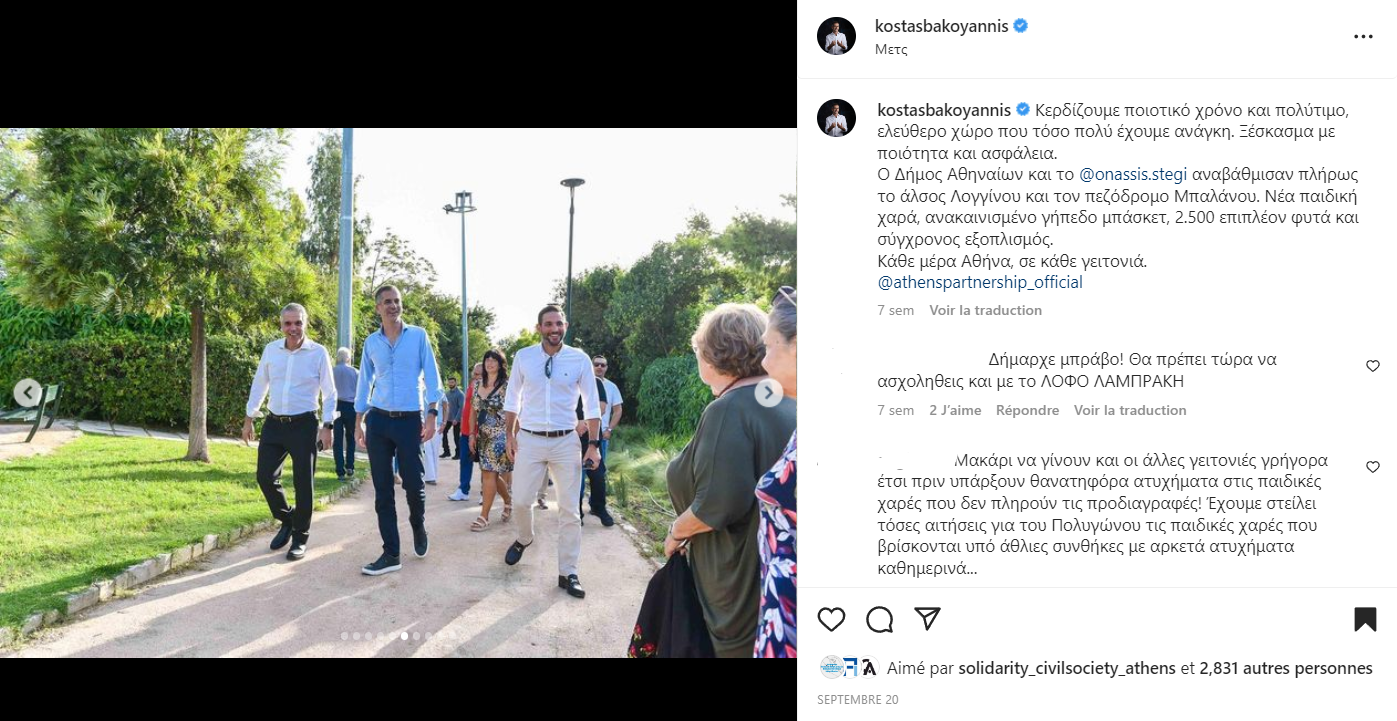
« We save quality time and valuable free space that we so desperately need. Operating with quality and safety. The Municipality of Athens and @onassis.stegi have completely renovated the Longinou Grove and Balanou pedestrian street. New playground, renovated basketball court, 2,500 additional plants and modern equipment. Every day in Athens, in every neighborhood. » Instagram Kostas Bakoyannis
The convenient myth of «an empty and degraded space»
How does this space war begin? In our case, and as in any process specific to urban capitalism, it begins with the argument of a so-called « empty, neglected and degraded » space. This myth of a social space that dies when the state and local authorities have withdrawn, amounts to saying, from above, that without the institutionalization, the sanitization, the standardization of space then the place has no existence. Moreover, the collective FYTA mocks this in a satirical video of the exhibition Plasmata by embodying an Onassis foundation addressing us in these terms: « We have moved from chaos to order. After all, what was Pedion tou Areos before this? A chaotic wasteland, a place characterized by difficulty where communication failed. And what is it now? A center of life. »
By erasing the informal history of the park, creating a « need » for rescue and placing the public authorities as helpless victims, the Region of Attica and the Municipality of Athens are mounting from scratch the « vital » recourse to private companies and foundations. This is a textbook case of the legitimization of a public-private partnership that is in the genes of philanthro-capitalism. It is a transfer of responsibility from the public service to the profit sector. Onassis obviously fits into this case through its « cultural » events and renovation projects. The latest one is for the park of Pedion tou Areos. The work is to be done as a « donation » of the foundation to the Region of Attica for an amount of 373,241.59 euros excluding VAT and through its construction company ARIONA HELLAS S.A. The renovation work that will be carried out in the park by Onassis is praised by the association Sillogou Athina (Συλλόγου Αθηνά), which mocks the fear of privatization.
Security capitalism
The presence of the foundation should also be understood as a tool of security policies. In 2016, the deputy governor of the Region of Attica, Ermina Kyprianidou, was already suggesting that more people should be attracted to Pedion tou Areos in order to evict « undesirable » populations (poor, exiled or protesting): « The issue will not be solved by putting tanks in the park. With the help of continuous policing and events that will attract people to the park, we can bring it back to life and reduce the ‘gray areas’, » she said. « The problem starts when there is no one in the park. As more people visit, the problem will decrease. » In the years since, those words have turned into actions as more and more institutional events have taken up more and more space in the park. The exhibitions You and AI and Plasmata or the grand reopening of the high-end restaurant Green Park – and all the media hype that punctuated these events – have participated in the normalization of a security presence (police but also and especially private security) in Pedion tou Areos. The association Syllogos Athina Pedion tou Areos defends this vision of the park. It has publicly praised the resumption of the rounds of the company Falcon Security in May 2022, while on its side the Onassis foundation set up rounds by electric bicycle. Thus, the Plasmata exhibition also becomes synonymous with surveillance.
It is not so much a question of acting on the causes of social inequalities, but rather of identifying groups allegedly « at risk » and reinforcing their control through police and surveillance devices
We can speak here of a security ideology regularly mobilized by the ruling class for electoral purposes. It is based on a pejorative representation of the city, systematically associated with crime, incivility, insecurity and the fantasized image of a « migratory wave. Such representations testify to the penetration of a racist and xenophobic imaginary in certain discourses on the city; to a tendency to ethnicize and pathologize « social risk ». Mayor Bakoyannis does not hide from this. On the one hand, he points the finger at those who, according to him, « degrade » the city: people who tag the walls of Athens or squat in empty buildings. On the other hand, he communicates abundantly on his political action in favor of a « clean Athens » and publishes numerous photos of employees sanitizing the walls, as on February 25, 2020 on his Instagram page: « This is a deliberate choice to end the footprint of misery in public spaces. This time a great effort was made to clean the long fence of 400 meters Pedion tou Areos in Alexandras. It took 260 kg of special and ecological material to remove the graffiti and ensure that the stone is not damaged. Let’s restore aesthetics and cleanliness to the city, pollution is not art. »
This security ideology is also an industry that relies on the image of a « postcard city », perfectly safe, « streamlined », conducive to financial flows and capital accumulation. This industry generates growing profits and feeds on several fears: that of the « foreigner », the « immigrant », the « young suburbanite », the « working classes, dangerous classes » or the « dangerous militant ». This rhetoric shapes the figures of the « enemy within » and « enemy without », whose designation leads to a definition of social inequalities that is itself security-oriented. For Philippe Mary, the dominant discourse on urban riots, the informal economy, sexual delinquency, terrorism, etc., leads to a new model of « risk management. Thus, it is not so much a question of acting on the causes of social inequalities, but rather of identifying so-called « at-risk » groups and reinforcing their control through police and surveillance measures. With the increased presence of private security, one can imagine that those who survive in the park now know that they are being watched, even in the thickets when expensive exhibition facilities are installed. Whether the surveillance is private or police, it has the effect of expelling those groups or individuals considered « undesirable » and the opportunities to organize the park from below.
5. CONCLUSION – IN THE FACE OF WASHING, WE CAN ONLY RELY ON OUR RELATIONSHIPS OF SOLIDARITY
« The purpose of the existence of art is not to be beautiful. This is mainly done by decoration and artists who serve companies and kings. The purpose of art is to open up new ways for us to think and feel about the horrible world we live in. The purpose of Art is to intervene, to protest, to be unexpected, to make noise, to reflect, to surprise, to sabotage, to conspire with the voiceless. Sometimes very threatening and cacophonous modes of expression are necessary. A howl is neither melodic nor pleasant, but dissonant and threatening. Sometimes Art is a howl and that is why it has the power to save our lives. » Tasos Sagris, Void Network, August 1, 2022
We have lived for several months for one and several years for the other near the park Pedion tou Areos. As elsewhere in the Greek capital, we are witnesses of state violence and the damage of urban capitalism: generalized surveillance and repression, mass tourism, exclusion of the « undesirable » (often exiled) working classes, or the commodification and privatization of the territory. Through this article, we wanted to recall a part of the memory of the struggles and the informal history of Pedion tou Areos: it is a powerful weapon because we face a dominant word that saturates the media, political and sometimes even academic space. Our reflection represents only a starting point of a larger research work. This text wished to thwart social-washing, a political marketing technique based on the recovery of subversive discourses, emptied of their meaning and used as a showcase by the ruling class organized in diaploki. This social-washing includes many variants of green, solidarity, feminism or pink-washing. This « art of whitewashing » is intimately linked to philanthro-capitalism, which has been a political weapon to perpetuate systems of domination for several centuries. This phenomenon of expropriation of our practices is at the same time a symbolic, class and spatial war that requires a better knowledge of our enemies behind the myth that surrounds them. As Mc Goey and al argue, « the growing cultural reverence for philanthrocapitalism has helped renew public confidence in discourses of ‘sweet commerce’ (Hirshman, 1982) and capitalist growth.«
Finally, what we observe in Pedion tou Areos is all the more concerning in light of the state repression against those who struggle to maintain free and common spaces throughout Athens. This repression is felt on university campuses which were also often, before 2019 and the wave of repression of squats and radical movements, common spaces in the strongest sense of the word – with many self-managed activities. These free, squatted, self-managed, sometimes non-market spaces allow in part to thwart certain relations of power and domination. Cooking, eating, celebrating, taking care of oneself, sharing knowledge, it is to make politics in everyday life and to express all our potential of solidarity and mutual help. These are spaces of emancipation to defend and values and practices to spread everywhere that participate in the political affirmation of another possible society. And contest the hegemony of the dominant forms of life and ways of living imposed by the State or urban capitalism.
______
SOURCE: https://nicolasrichen.wordpress.com/2022/11/24/ang-part-1/
